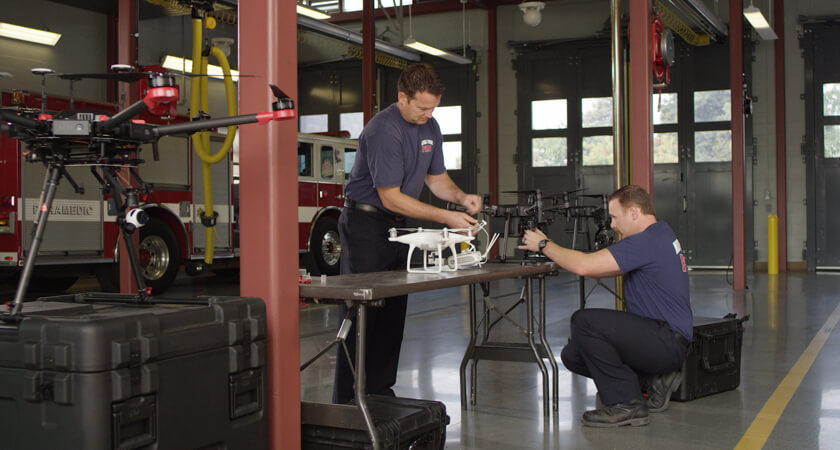Drone programs start with varying degrees of ambition. Many organizations simply want to automate time-consuming tasks or increase the scope of their operations. Others have loftier goals: reinventing what productivity looks like, and ultimately digitizing their working environments.
No matter the intention, the challenge is to progress smoothly through the necessary stages - from proof of concept and identifying your key applications, to standardizing operating procedures and building a solid business case - in order to reach the point at which you’re ready and able to scale out.
Here are a few points to consider when scaling out your drone operations.
Setting standards and sticking to them
Drone programs can be complex. They usually connect different departments across an organization and go through various stages between mission initiation and producing a useful end result.
This complexity will probably become clear during the opening phase of your program. And if it doesn’t, it certainly will when it comes to scaling out your operations.
For this reason, it’s vital to standardize the processes that underpin your drone program. This applies to everything from mission planning and management to pilot training, hardware maintenance, data analysis, and regulatory compliance.
As your operations scale up, you’ll need a solid, repeatable system to lean on. When your organization is carrying out multiple missions across different sites with different crews, having processes set in stone is the only way to guarantee consistent results.

Expanding your fleet
From a practical perspective, scaling out a drone program means that you’ll need more hardware and more pilots - particularly if your operations are cross-border or in disparate geographical locations.
There are several ways to bolster your fleet. The best fit for your organization depends on the scale of operations you want to undertake, the type of missions being carried out, and the extent of your desire to maintain close control over each flight.
A popular choice is to launch a centralized operations team at your headquarters. This department will manage your aerial missions and oversee crews working in different locations. You may even need to put together multiple operations teams to cover different locations.
Either way, an internal approach enables you to keep a close eye on all of the aerial data gathering missions taking place in your name.
But it isn’t always the most practical solution. A more cost-effective way of scaling out might involve working with a third party drone services provider. When working with external providers, you can reduce the initial outlay on equipment and pilot training as you scale up and explore.

Prioritize data storage and management
The crux of every drone program is data. Whether you’re inspecting infrastructure, mapping a construction site, or gathering insights on agricultural productivity, the data collected by drones is what’s powering smarter decision making.
Increasingly, this information is highly valuable and highly sensitive. Your drone program must include steps to safeguard, store and manage all the data you collect.
This aspect of your drone program is even more pertinent if you’re working on projects with clients or partners. The European Union’s General Data Protection Regulation (GDPR) was a significant development in how companies around the world think about the security of their customers’ data.
It’s wise to get ahead of this curve, wherever your operations take place, and invest in best practice storage and data management processes. These measures should seamlessly integrate with your operational standards. And just like those standards, having them in place before you scale will minimize your risk going forward.
These are the core elements of scaling a successful drone program. For greater depth and a step by step guide to building, managing, and scaling out your drone ambitions, download the white paper below:



.png?width=300&name=FH2%20update%20(1).png)
-1.png?width=300&name=HS%20-%20Featured%20Images%20(3)-1.png)
